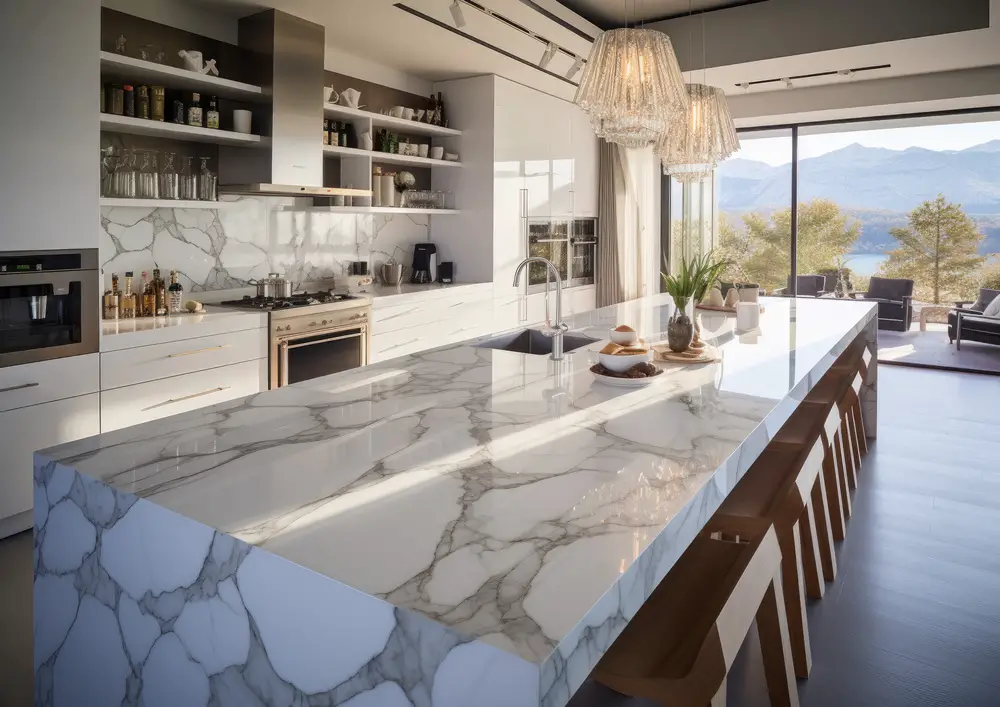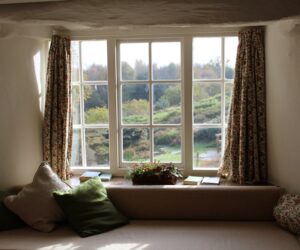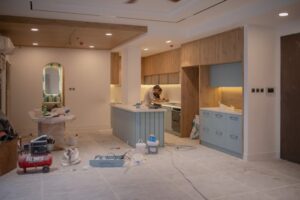
Whether squared, rounded, beveled or decorative, a countertop’s edge profile serves both form and function. This seemingly minor detail affects aesthetics, ergonomics, and durability. With the range of profiles available, edges present a significant opportunity to personalize counters and transform the overall feel of your kitchen or bath design.
Crisp, Clean Square Edge
A simple right-angle square edge gives kitchen countertops a sleek, contemporary look. The sharp line pairs well with streamlined cabinetry and minimalist elements like undermount sinks. According to the good folk over at Bedrock Quartz, a square profile also maximizes countertop footprint in smaller spaces.
Downsides include sharp corners susceptible to chipping, especially on stone surfaces. The hard edge also lacks ergonomic comfort when resting arms and hands on its cutting ridge. But for modern visual appeal, a square profile sets counters apart.
Round-over Eases Hard Edges
A round-over edge effortlessly softens square corners by replacing the sharp angle with a rounded arc. The profile adds subtle detail while smooth slopes make an easy place to rest forearms when prepping meals. Round-over edges on lengthy runs create comfortable flow.
On the downside, round-overs slightly decrease a counter’s usable depth compared to a square edge. Visually, they lose a bit of the crisp linearity that defines a contemporary kitchen. But the eased edge imparts timeless fluidity.
Bevel Accentuates Thickness
Beveling the counter’s edge at an angle reveals its side, accentuating thickness, and laminations in materials like quartz and solid surface. Bevels lend dimensional detailing, with more width adding greater visual weight. Slimmer bevels keep the look lightweight.
Consider pairing open shelving with a beveled edge to highlight its tapered appearance. One downside – the angled edge collects crumbs and spills. But bevels undeniably make counters pop visually with added depth.
Dupont Edge Eases Corners
Similar to a round-over, the Dupont edge streamlines corners but features a wider flat space between rounded edges. This edge profile eases impact points while maintaining some sharpness on the counter face.
Dupont edges work well when you want softened corners on select seating areas like an island but prefer square edges elsewhere. The gently curved contour adds comfort while retaining an architectural edge.
Built-Up Edges Increase Thickness
Some materials, like solid a surface, can be built up along their edge with additional layers to increase thickness. The stepped profile creates an impactful “counter on counter” effect, elevating a section of the surface.
Built-up edges work well on waterfall island designs to mimic thick stone. They can also hide lighting strips for functional ambiance. Downsides include cost to add material and a need for precision built-up installation. But for a substantial high-end look, building up edges packs visual punch.
Decorative Edge Options
For truly custom counters, decorative specialty edges provide limitless possibilities to express personal style. Bullnose edges round over both the counter face and bottom surface for stunning doubled curves. Ogee edges contain an upper concave arc above a straight bottom.
More intricate options like triple pencil edges, step edges, and tongue-and-groove patterns take edges to artistic levels. Decorative detailing makes ordinary counters extraordinary.
Conclusion
Far from an afterthought, a countertop’s edge profile really does dramatically affect aesthetics and ergonomics in kitchen and bath design. Crisp square edges provide modern simplicity. Bevels and built ups add dimensional detail. Round-overs soften the look and feel. And decorative edging offers limitless personalization.
With this key detail, you can transform counters from basic to bespoke. Elevate your next remodel by giving as much attention to edge profiles as the surface itself. Even small steps create big design impact.




